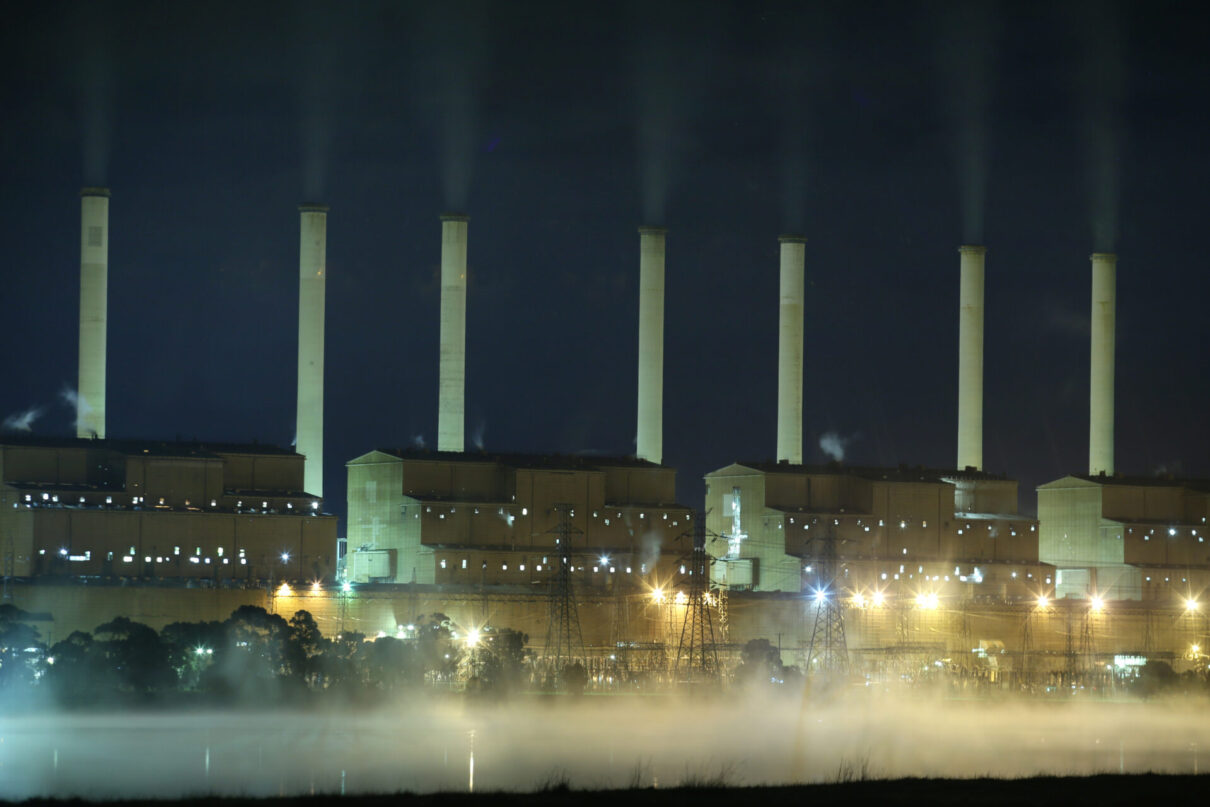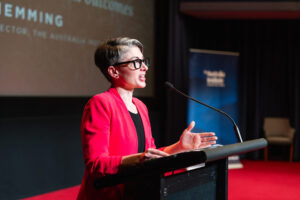As the Albanese government prepares to announce Australia’s 2035 climate target, pressure is mounting to show greater ambition.
A cut in greenhouse gas emissions of at least 75 per cent below 2005 levels would broadly align with the science – and strengthen Australia’s bid to host the 2026 United Nations climate conference.
Announcing a bigger number is one thing, though. How the government reaches it is another.
Australia’s current target under the international treaty on climate change, the Paris Agreement, is a 43 per cent cut in emissions by 2030. Progress is tracked through a set of climate accounts called the “inventory” and reported annually. Emissions from across the economy – including energy, transport, industry and land – are recorded, added up, and presented as a single figure.
The Australian government claims emissions for the year to December 2024 were 27 per cent below 2005 levels. But Australia’s emissions inventory is riddled with loopholes and unverifiable modelling that paints a misleading picture of progress. Just this week, United Nations Climate Change Executive Secretary Simon Stiell urged Australia not to settle for the bare minimum as it prepares to announce its 2035 target. “Bog standard is beneath you,” he said. “Don’t settle for what’s easy. Go for what’s smart by going big.” But bog standard would be an improvement on what’s happening now.
Understanding how Australia has cooked the books to create the illusion of climate progress is technical and headache-inducing. It’s important, though, in order to see that raising ambition without raising integrity won’t necessarily cut emissions. A higher target could simply entrench the same tricks successive governments have used for decades to avoid genuine decarbonisation.
A closer look at the inventory shows that most of Australia’s claimed 27 per cent reduction has not been achieved evenly across the economy. Instead, it’s been concentrated broadly in the “land sector”, officially known as “Land Use, Land-Use Change and Forestry” (LULUCF).
That concentration is the result of deliberate choices, starting with the selection of that 2005 reference point against which Australia’s emissions reductions are measured – the “baseline” year.
When Australia signed the Paris Agreement in 2015, it selected 2005 as the baseline. Emissions in the land sector were unusually high that year due to extensive land clearing. However, they were already trending downward thanks to tighter state government clearing laws. Then, from 2010, heavy rainfall drove forest regrowth, pushing emissions even lower. By locking in an inflated baseline, Australia made overall emissions appear to fall – even as fossil-fuel pollution stayed high.
Even today, most of Australia’s reported climate progress comes from the land sector. When trees regrow, or livestock numbers fall, or land is managed differently, greenhouse gases are theoretically absorbed. The government estimates how much is absorbed and subtracts it from emissions elsewhere. If the land sector appears to absorb more than is emitted, the overall numbers show emissions falling, even if pollution from fossil fuels and transport is rising.
This approach is deeply misleading. Natural systems are unstable, hard to measure and more uncertain than simply avoiding emissions in the first place. They do absorb pollution but can lose it rapidly with fire, flood or policy change, wiping out years of claimed reductions. Burning fewer fossil fuels keeps pollution out of the atmosphere permanently. Counting temporary carbon storage in nature as equivalent creates the false impression of progress without the permanence to back it up.
It’s also unclear whether the amount of pollution the government claims is being drawn down is real. No one is out there with a clipboard counting trees. Australia’s land sector emissions are entirely modelled, based on satellite imagery, biomass estimates and assumptions about soil carbon and land use activities.
The data in the model is not publicly available, making independent verification impossible. That ambiguity works in the government’s favour. Climate analyst Ketan Joshi has shown that almost every year since 2018, the government has retrospectively revised the land sector’s contribution, always in the direction of greater reductions – the climate equivalent of finding a budget surplus down the back of the couch. Projections continue this pattern, with the Australian government’s pathway to 2030 relying heavily on land sector emissions decreasing and staying low.
Excluding the land sector from Australia’s emissions since 2005 reveals a figure quite different to the claimed 27 per cent reduction. Australia’s emissions across the rest of the economy have only dropped by about 3 per cent since 2005 and current projections suggest they are likely to be about 23 per cent below 2005 levels by 2030. If that’s surprising, just think about all the big utes that have been put on the road since 2005, let alone all the new gas and coal mines opened.
Even creative accounting has its limits. You can only revise the numbers or count imaginary trees so many times. If the government raises its climate target while continuing to subsidise fossil fuels, approve new coal and gas projects and hand out tax breaks for enormous SUVs, it will need to find new sources of “reductions” to close the gap. It already seems to be flagging a couple of likely suspects, but neither offers a credible path to climate progress.
The first is “blue carbon”: the carbon stored in aquatic ecosystems such as mangroves, saltmarshes and seagrasses.
Some elements of blue carbon are already embedded in the emissions inventory. Australia is one of the few countries to formally include coastal wetlands in its national accounting under the Paris Agreement, mostly through the broader LULUCF sector and certain wetland and aquaculture categories.
However, the way the government is positioning blue carbon makes its purpose increasingly obvious. The language in the inventory is revealing – even if the official numbers don’t currently reflect it – promoting Australia’s coastal wetlands as storing an estimated 3 billion tonnes of carbon. Australia has developed blue carbon accounting frameworks, funded dedicated research, launched the National Ocean Ecosystem Account, and integrated blue carbon into its climate, environment and economic strategies.
In 2022, then environment minister Tanya Plibersek told the ABC: “If we are doing more polluting in one area, we have to compensate … by planting mangroves, investing in these blue carbon projects.” In the launch of the ocean accounting framework, the offset logic was explicit: “Mangroves and seagrass sequestered over 14 million tonnes of carbon … equivalent to the amount emitted by over 4 million cars.”
To be clear, protecting and restoring blue carbon has critical ecological value. But like terrestrial carbon sinks, these natural systems are vulnerable to environmental volatility, measured with modelling and easily gamed. Blue carbon is not scientifically interchangeable with geological carbon, yet its inclusion in national accounts could allow claimed emissions to fall, even as fossil-fuel use continues to rise.
Australia’s approach to emissions accounting is greenwash in real time. Modelled carbon “removals” from natural ecosystems enable the government to approve new coal and gas projects while still claiming that emissions are falling.
The other supposed source of reductions lies in speculative technologies. These are used not to show that emissions are falling now but that they will fall.
The government’s own projections vaguely cite “technology”, including carbon capture and storage (CCS) – burying CO2 underground – as the source of future industrial emissions cuts. It has never delivered, but it helps governments delay real action while preserving the illusion of headway. If the target for cuts is raised, expect even more inflated claims and even more public money thrown at it.
Estimates first promoted by the Coalition and embraced by Labor suggest Australia has some 20 billion tonnes of underground storage capacity. This is a ludicrous suggestion, given it is roughly half the world’s annual CO2 emissions. Labor is also ramping up its financial and ideological endorsement of CCS, having passed enabling legislation for Santos in 2024 and recently awarded a CCS joint venture owned by INPEX, Woodside Energy and TotalEnergies major project status as a “clean energy” initiative.
CCS doesn’t work – at least not as claimed. Globally, its promise mostly enables more fossil fuel extraction. It has no serious role in cutting emissions from transport, agriculture or industry – despite Resources Minister Madeleine King insisting it has “a vital role to play” in meeting Australia’s net zero targets.
The government’s claims that emissions are falling, by counting unverifiable natural sinks and hypothetical technologies, are deception. The current 43 per cent target isn’t even particularly high, and the government still cannot meet it without cheating. Raising the target just increases the incentive to fudge the numbers further.
With the Nationals now openly campaigning against net zero, Labor can frame even modest measures as bold, lowering the bar for climate ambition even further. It doesn’t need the Coalition’s support to pass legislation, so the anti-net zero crusade is irrelevant in practical terms. Politically, though, it’s useful. So long as Labor does more than the Coalition, it can appear credible, without aligning its targets with science.
The government wouldn’t need to keep cooking the books if it simply had the courage to confront fossil fuels. Nearly a fifth of our domestic emissions now come from digging up gas and coal for export industries that contribute little to the public good or broader economy. Since most of our gas and coal is shipped overseas, these aren’t the emissions that keep the lights on – they’re the emissions of keeping one industry afloat.
The science is clear: to limit warming to 1.5 degrees Celsius, global emissions must at least halve by 2030. As a wealthy, high-emitting fossil-fuel exporter, Australia’s fair share demands far deeper cuts. A 75 per cent cut by 2035 is needed, along with deep, rapid cuts across every sector of the economy to actually meet it. Australia cannot keep using creative accounting to avoid the hard task of cutting emissions at the source.
Big targets won’t solve the climate crisis if they’re built on fiction. Without a real commitment to end fossil fuel subsidies and expansion, without serious action to address rising transport emissions, and without full transparency and independent access to emissions accounting, more ambition won’t bring more integrity – or more results.
Between the Lines Newsletter
The biggest stories and the best analysis from the team at the Australia Institute, delivered to your inbox every fortnight.
You might also like
We need political courage, not caution | Polly Hemming
When it comes to solving the biggest national problems, a bit of courage leaves political caution for dead. Now’s not the time for politeness.
Integrity at home shapes global outcomes – Polly Hemming | Climate Integrity Summit 2025
Despite frequent claims that Australia is ‘too small to make a difference,’ historical evidence demonstrates our nation’s outsized role in influencing international norms and policies.
Highway to hell with Joëlle Gergis | Summer Book Club
Do Australians truly grasp the impact of a warming planet and what it could mean for our sunburnt country?




